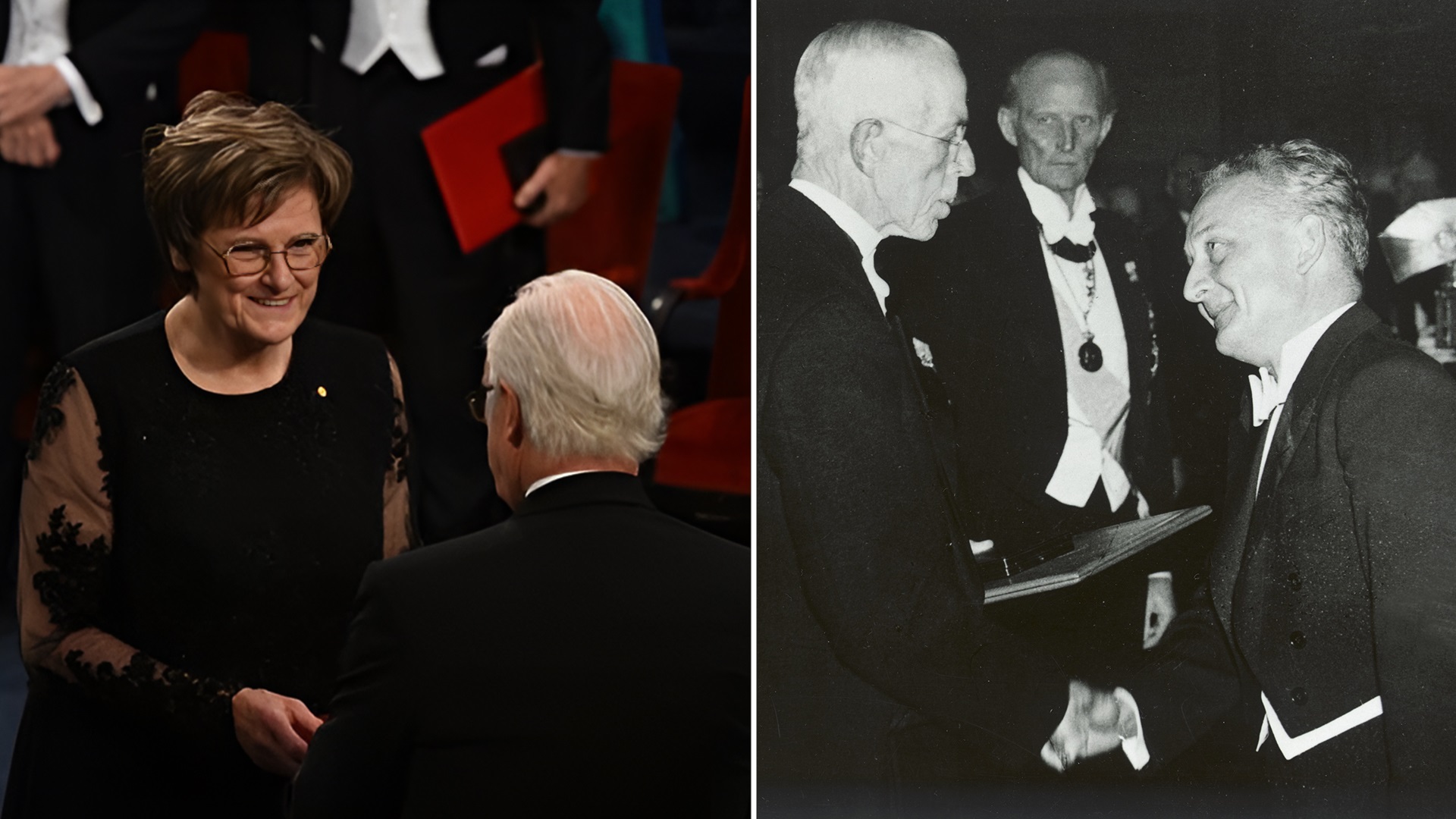
The Nobel Prize, widely regarded as the world’s highest scientific honor, is celebrated in Stockholm with a meticulously organized series of events culminating in the award ceremony. We have compiled 10 fascinating insights into Albert Szent-Györgyi’s time in the Swedish capital 88 years ago and Katalin Karikó’s noteworthy moments during Nobel Week in 2023.
Between 1901 and 2024, a total of 976 individuals and 28 organizations have received the Nobel Prize across its five original categories (Physics, Chemistry, Physiology or Medicine, Literature, and Peace) along with the Sveriges Riksbank Prize in Economic Sciences – all in Memory of Alfred Nobel. In this article, we draw comparisons between 10 imagined entries from the hypothetical journals of the University of Szeged’s two Nobel laureate professors, Albert Szent-Györgyi and Katalin Karikó.
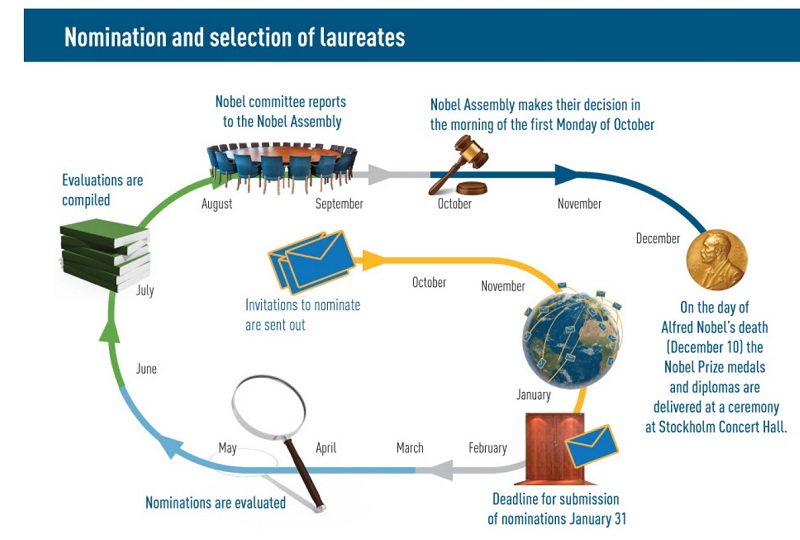
The Nobel Prize nomination and selection process has been continually refined since 1901, with each year’s Nobel laureates chosen in line with rigorous rules and procedures.
Scientific geniuses
“A genius and a tireless scientist” – this was how the keynote speaker at the Stockholm Nobel Prize ceremony described the 44-year-old Albert Szent-Györgyi. Similarly, the French, in a documentary exploring the groundbreaking work of 68-year-old Katalin Karikó, called the scientist “La femme qui peut sauver le monde,” meaning “The woman who can save the world.”
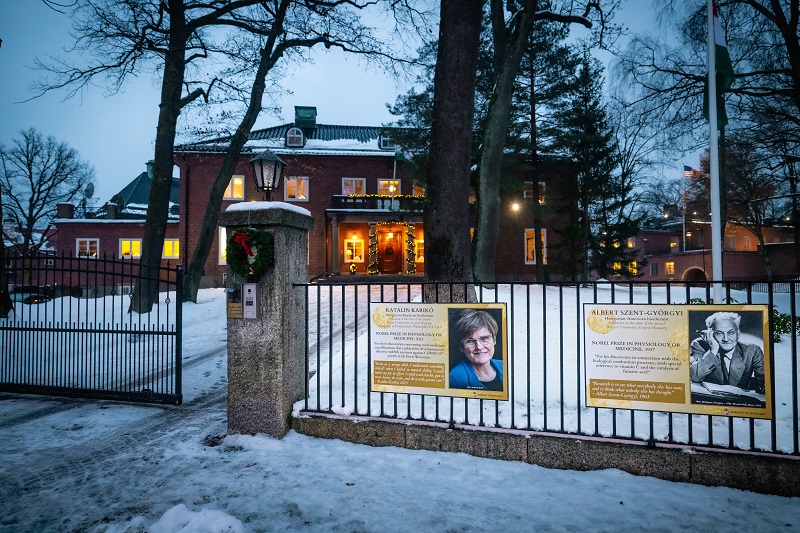
In the winter of 2023, the Hungarian Embassy in Stockholm paid tribute to the achievements of Hungarian Nobel laureates, including the two distinguished professors from the University of Szeged, with an outdoor exhibition presented on the embassy grounds.
Honorary citizens
Albert Szent-Györgyi became an honorary citizen of Szeged, home to his university, on December 1, 1937, just nine days before the Nobel Prize ceremony in Stockholm. Katalin Karikó received the same honor in Szeged on May 21, 2021, two and a half years before the Nobel Prize ceremony. This was Professor Karikó’s second such recognition, as her hometown, Kisújszállás, had already conferred the honorary citizenship title on her at a ceremony on August 20, 2020.
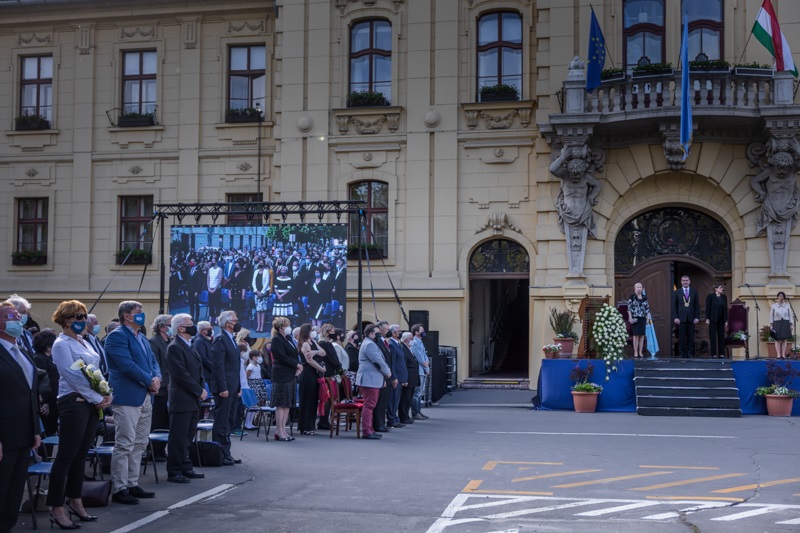
The University of Szeged and the city of Szeged have united to celebrate the remarkable achievements of Katalin Karikó, the world-renowned mRNA researcher, who has also been honored with the title of honorary citizen of Szeged.
Unique careers
Awarded the Nobel Prize in 1937, physician and biochemist Albert Szent-Györgyi remains the only Hungarian scientist to have received the honor while living and conducting research in Hungary, specifically in Szeged. Notably, he was individually honored “for his discoveries in connection with biological combustion processes, with special reference to vitamin C and the catalysis of fumaric acid.”
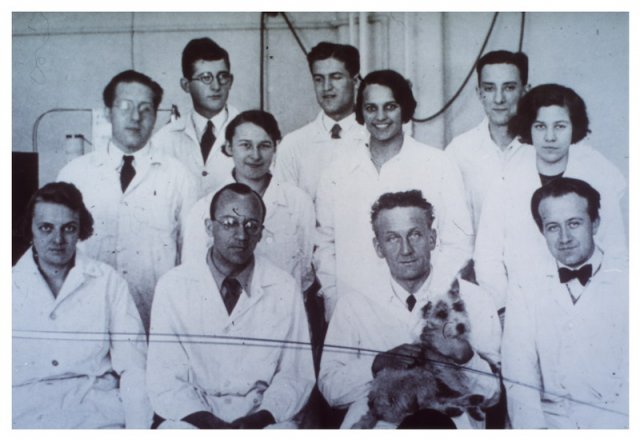
Albert Szent-Györgyi with a group of his fellow researchers in the university laboratory in Szeged
Biologist and biochemist Katalin Karikó is the only female researcher whose groundbreaking research on RNA is rooted in her university studies in Szeged and culminated in her receipt of the Nobel Prize while serving as a research professor at her alma mater, the University of Szeged. With her career spanning from her first position at the Biological Research Center in Szeged to work at laboratories in the United States and Germany, she was awarded the Nobel Prize in 2023 – together with Drew Weissman – “for their discoveries concerning nucleoside base modifications that enabled the development of effective mRNA vaccines against COVID-19”.
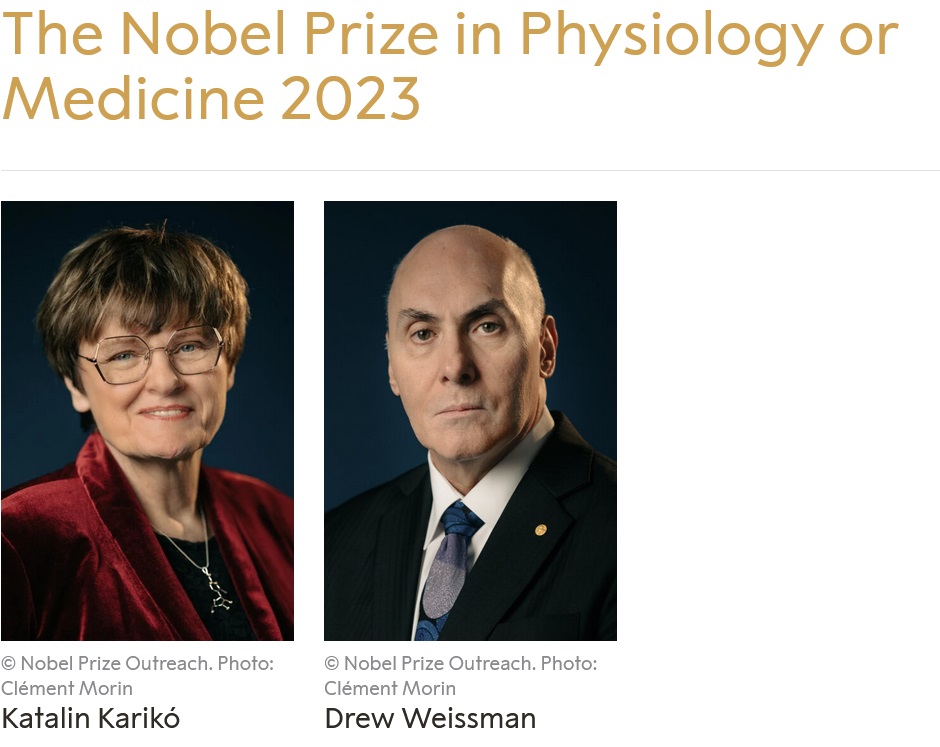
Among the photographs featured at the Stockholm Nobel Museum is the iconic portrait of Albert Szent-Györgyi, commissioned by the Nobel Foundation and taken by Béla Kováts, a distinguished photographer from Szeged.
Katalin Karikó’s portrait was captured in Stockholm by Clément Morin, whose name is required to appear beneath the official Nobel portrait of the esteemed researcher.
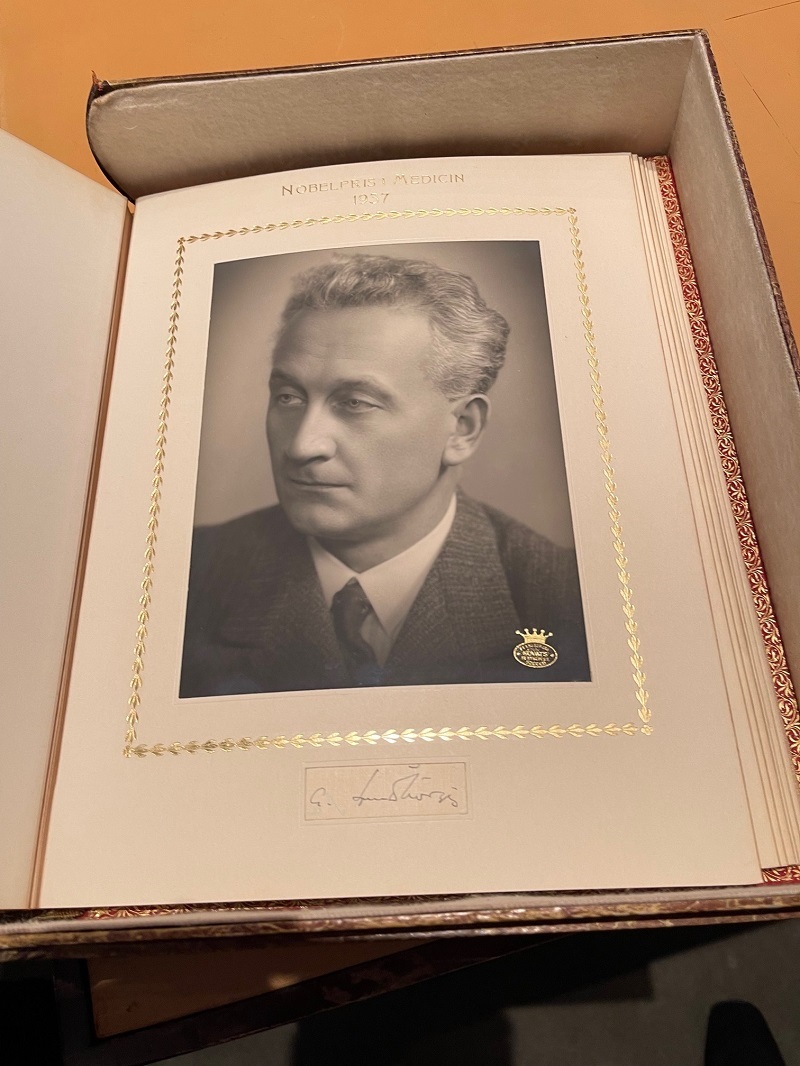
During her 2023 stay in Stockholm, Katalin Karikó visited the Nobel Foundation building, where, at her request, she was shown the official portrait and signature of Albert Szent-Györgyi, the late professor from Szeged. This request was prompted by the fact that the book Karikó signed as a newly awarded Nobel laureate did not extend back to 1937. As such, December 11, 2023, marks a unique “encounter” between the two Nobel laureates from Szeged.
Archive photo: Béla Kováts, distinguished photographer from Szeged
On December 4, 1937, Albert Szent-Györgyi and his wife set off from Szeged by train for the Nobel Prize ceremony in Sweden. They crossed the sea by ferry and arrived in Stockholm on December 8, 1937. From the Swedish capital, they traveled to Gothenburg on December 14, and on December 15, they sailed to England.
Katalin Karikó and her husband departed to Sweden from Philadelphia, with their flight landing in Stockholm on December 4, 2023. On December 14, 2023, they flew back to the United States.
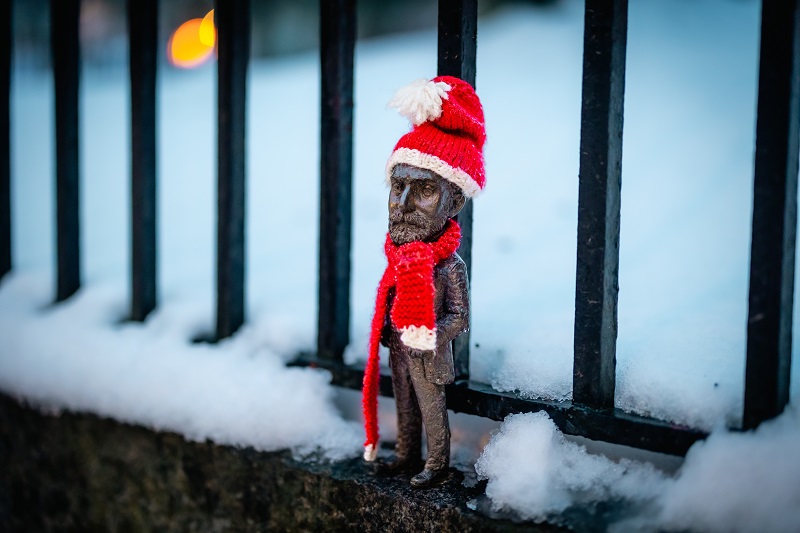
In Stockholm, the miniature Nobel statue on Nobel Street, located beside the Hungarian Embassy and created by Mihály Kolodko, has become a beloved landmark among Swedens, who even dress it during the winter months. This guerrilla artwork, cherished by the artist’s admirers, serves as a tribute to Alfred Nobel’s intellectual legacy, honoring his enduring commitment to the greater good of humanity.
Photo by István Sahin-Tóth
The mandatory Nobel lectures of both laureates from Szeged were held in English at the Karolinska Institute. Karikó delivered hers on December 7, 2023, just before the award ceremony, under the title “Developing mRNA for Therapy.” Szent-Györgyi presented his lecture on December 11, 1937, after the ceremony, with the title “Oxidation, Energy Transfer, and Vitamins.” Both professors from Szeged acknowledged their collaborators and colleagues by name during their presentations.
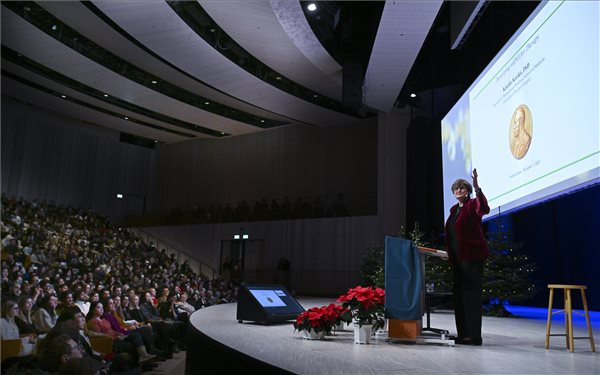
Nobel laureate Katalin Karikó delivered her lecture at the Karolinska Institute in Stockholm. Photo by István Sahin-Tóth
Stars of science
Hungary’s serving ambassadors to Sweden hosted respective luncheons in honor of the two scientists. The professors from Szeged also attended receptions at the Swedish Royal Palace: Albert Szent-Györgyi in 1937 and Katalin Karikó in 2023. Additionally, both participated in events organized by Hungarian communities in Sweden, sharing their insights and answering numerous questions from attendees.
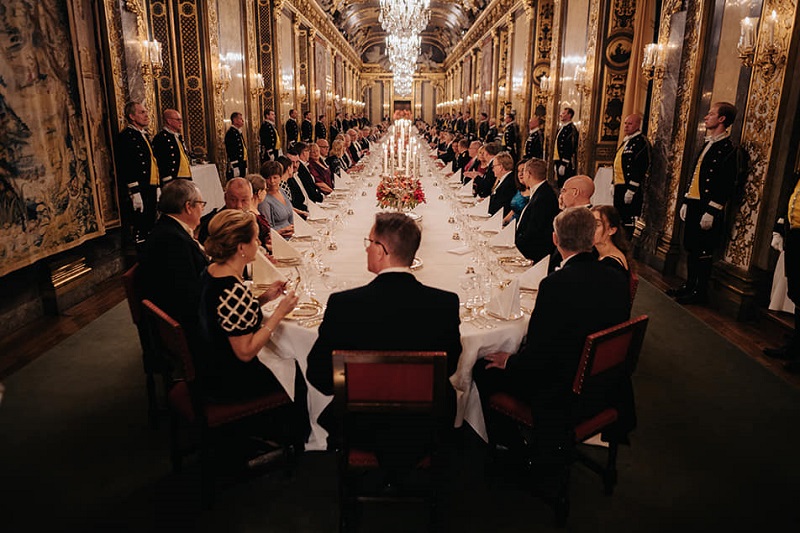
A royal dinner with Nobel laureates
Photo by Clément Morin
Guest lists
On their trip from Budapest to Stockholm, Szent-Györgyi and his wife were accompanied by Miklós Knébel, a pontifical chamberlain and designated correspondent for Hungarian radio. In Berlin, the couple were joined by their daughter, who was studying in Cambridge at the time.
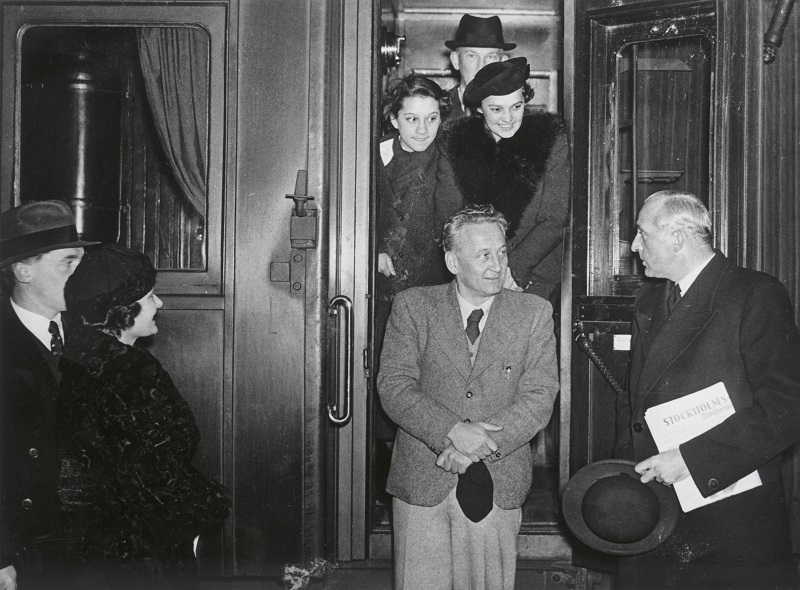
The Szent-Györgyi couple and their daughter arrived in Stockholm on December 8, 1937. At the train station, they were welcomed by a reception committee that included Frithjof Trulsson, the Hungarian consul, who is seen on the right holding that day’s issue of the Stockholms-Tidningen newspaper.
Professor Karikó’s guests traveled to Sweden from Hungary, Germany, and the United States between December 4 and 7 to join in honoring her. Among the family members celebrating with her were her husband, Béla Francia; their daughter, Zsuzsanna Francia, accompanied by her husband and two young children; and her sister, Zsuzsanna Karikó.
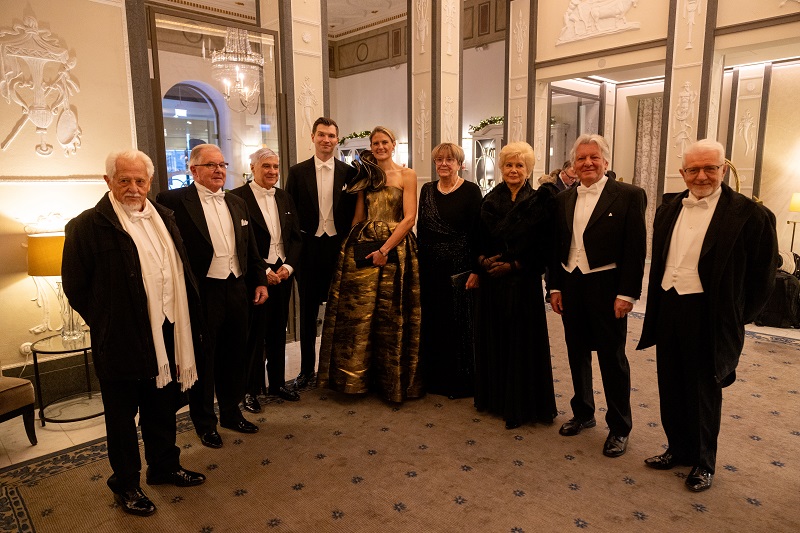
A group of guests of Nobel laureate Katalin Karikó (from left to right): Pál Venetianer, Aladár Szalay, László Orosz; Katalin Karikó’s son-in-law and daughter, Zsuzsanna Francia; Zsuzsanna Karikó, Éva Kondorosi, László Vigh, Ernő Duda
Photo by István Sahin-Tóth
Katalin Karikó’s two former mentors, Elliot Barnathan and David Langer, traveled to Sweden from the United States to honor the occasion. Her one-time research partner, Norbert Pardi, who now runs his own lab at the University of Pennsylvania, also made the journey from overseas. Representing BioNTech in Germany were Holger Kissel and Gábor Tamás Szabó, who, like Karikó, has roots in Kisújszállás. As a gesture of gratitude for experiences during her doctoral studies and early career, the Nobel laureate professor also invited researchers from the Biological Research Center in Szeged: Pál Venetianer, Éva Kondorosi, Ernő Duda, and László Vigh, as well as Aladár Szalay, who began his career at the Szeged Research Center and now works at the University of Würzburg. Also among the scientist’s guests was Professor László Orosz, representing the academic staff of the University of Szeged.
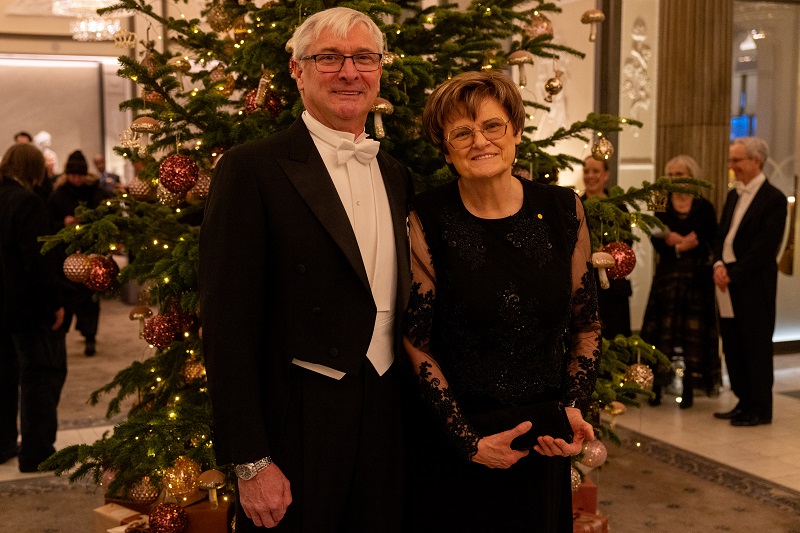
Katalin Karikó set off for the Nobel Prize award ceremony from the Grand Hotel in Stockholm, accompanied by her husband, Béla Francia.
Photo by István Sahin-Tóth
As part of Sweden’s Lucia Festival tradition, which involves crowning a young woman to represent Saint Lucia, both Albert Szent-Györgyi and Katalin Karikó were invited to perform the crowning during the ceremony of light, having been deemed the most congenial Nobel laureates of 1937 and 2023, respectively.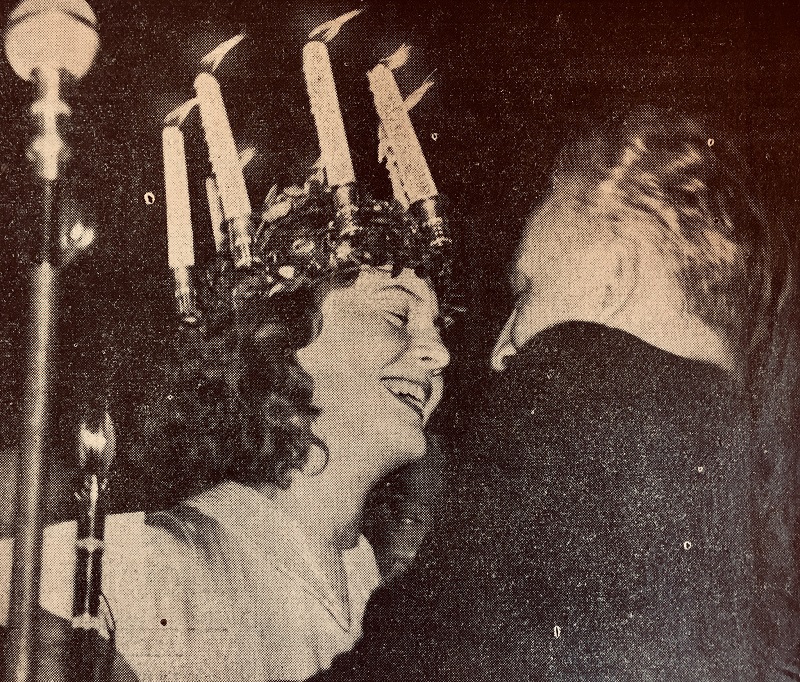
Albert Szent-Györgyi’s words from December 13, 1937, are documented in newspapers: “Lucia, daughter of light and beauty, I crown you with this jewel. I have been asked to do so because, as a scientific researcher, I have spent my life searching for light and working for health, the highest manifestation of which is beauty. I wish that your health and beauty may radiate to all people, and that your light may shine on the whole world. For when the flame is kindled in every human heart, the whole world becomes a vast sea of light.”
Photo from Stockholms Tidningen in 1937, archived in the Szent-Györgyi Collection of the Klebelsberg Library, University of Szeged
On December 8, 1937, a film about Szent-Györgyi was shot under the glaring light of Stockholm’s Jupiter lamps. Two days later, it was screened for viewers of the Hungarian Newsreel. Additionally, several local and international media outlets – including Swedish and Hungarian radio, as well as a group of Hungarian newspapers collectively known as Est Lapok (Evening Papers) – reported on how the “new conqueror from Szeged” spent his days in Stockholm.
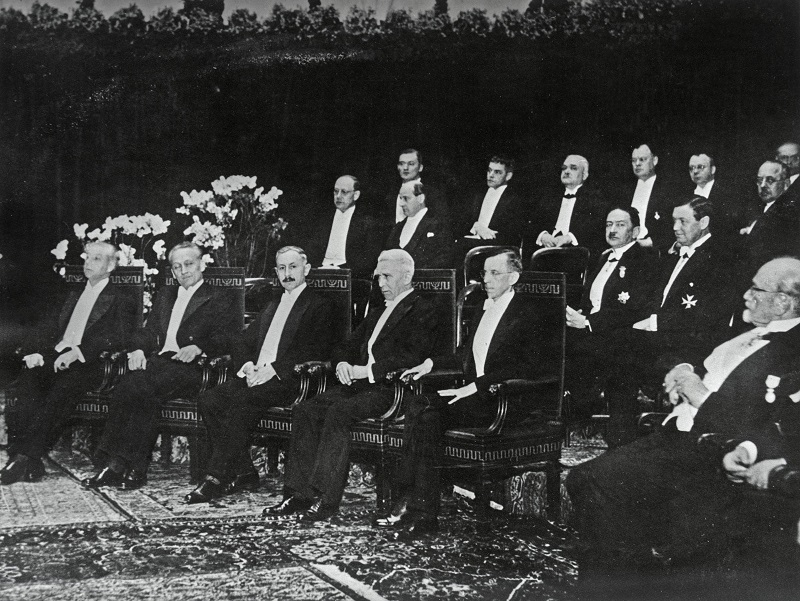
The 1937 Nobel laureates were (from left to right): Roger Martin du Gard (Literature), Albert Szent-Györgyi (Physiology and Medicine), Paul Karrer and Walter Norman Haworth (Chemistry), and Clinton Joseph Davisson (Physics). The sixth laureate, George Paget Thomson, who received the Nobel Prize in Physics, was unable to attend the ceremony in Stockholm due to illness.
Source: Szent-Györgyi Collection, Klebelsberg Library, University of Szeged
Swedish national television aired a documentary feature about Katalin Karikó, as well as the other 2023 Nobel laureates. The first Hungarian woman to receive the Nobel Prize also participated in several press conferences. Additionally, in accordance with the strict communication guidelines set by the Nobel Foundation, Hungarian public media and the University of Szeged’s press team provided extensive coverage of the scientist’s activities in Stockholm.
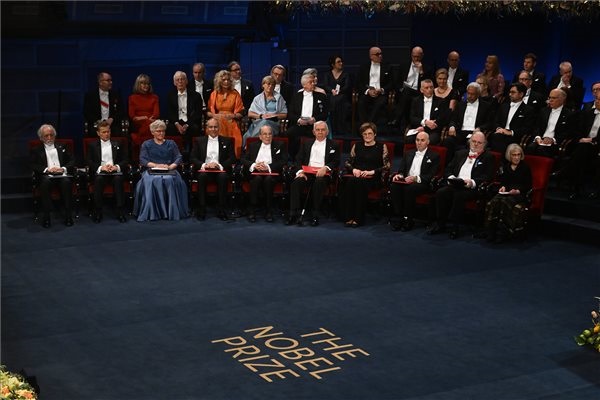
The 2023 Nobel laureates were (from left to right): Pierre Agostini, Ferenc Krausz, Anne L’Huillier (Physics); Moungi Bawendi, Louis E. Brus, Alexei I. Ekimov (Chemistry); Katalin Karikó, Drew Weissman (Physiology or Medicine); Jon Fosse (Literature); and Claudia Goldin (Nobel Memorial Prize in Economic Sciences). (The Nobel Peace Prize laureate, Narges Mohammadi, imprisoned at the time, was unable to attend the ceremony.)
Photo by Szilárd Koszticsák / MTI News Agency
*
University of Nobel laureates
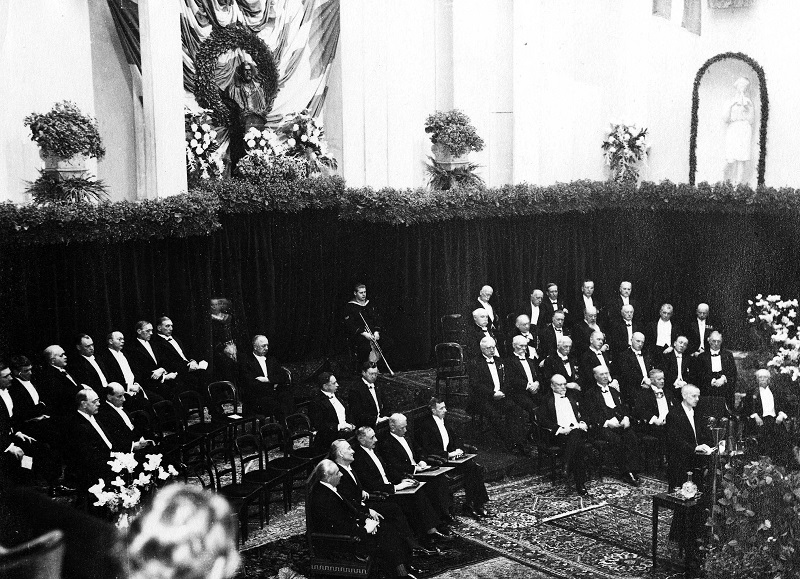
Laureates and members of the Swedish Academy at the Stockholm Concert Hall during the Nobel Prize award ceremony on December 10, 1937
Source: Szent-Györgyi Collection, Klebelsberg Library, University of Szeged
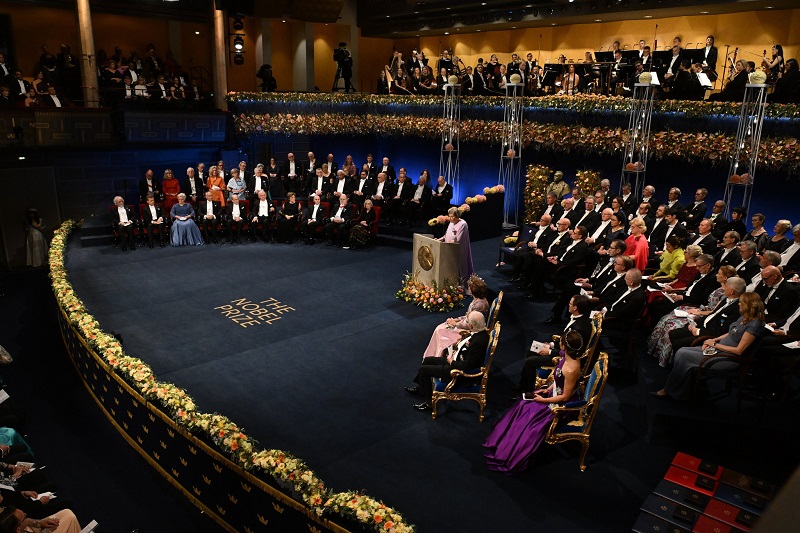
The Nobel Prize award ceremony on December 10, 2023, at the Stockholm Concert Hall
Photo by Szilárd Koszticsák / MTI News Agency
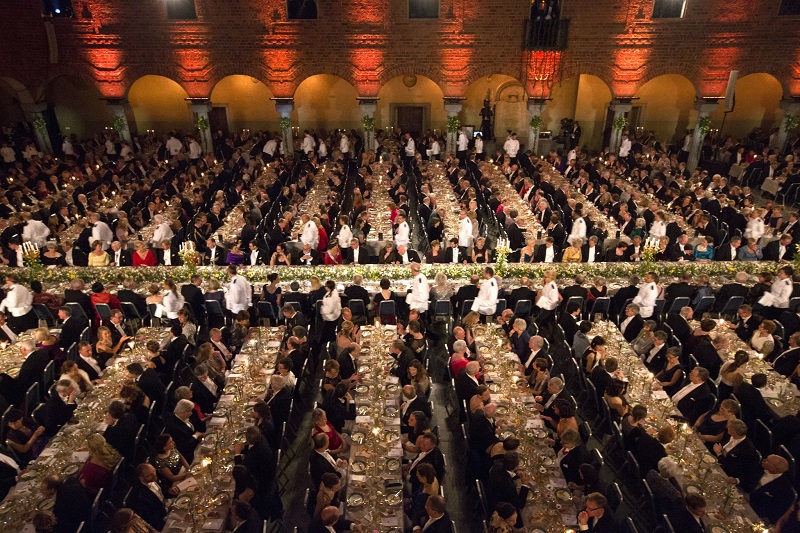
The series of ceremonies celebrating the distinguished Nobel laureates concluded with a banquet in the Grand Hall of the Stockholm City Hall on December 10, 2023.
Photo by Helena Paulin
The University of Szeged stands as the only institution among Hungarian universities and research centers to proudly boast two Nobel Prize-winning professors who were employed by the university when they received the prestigious gold medal and specially designed diploma at the traditional December 10 award ceremony. It is also the only Hungarian institution that has had its name mentioned twice during the Nobel Prize award ceremony at the Stockholm Concert Hall: first in 1937, when Albert Szent-Györgyi’s achievements were celebrated, and again in 2023, when Katalin Karikó’s extraordinary career was recognized.
Original Hungarian text by Ilona Újszászi
From left to right, the feature photo montage shows Katalin Karikó, biologist and biochemist, receiving the Nobel Prize in Physiology or Medicine from King Carl XVI Gustaf of Sweden on December 10, 2023, and Albert Szent-Györgyi, physician and biochemist, receiving the prize from King Gustaf V of Sweden on December 10, 1937.

